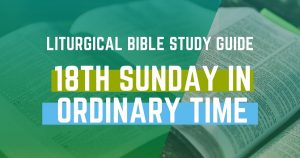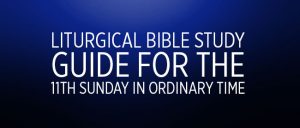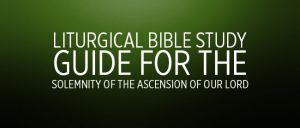1st Reading – 2 Kings 5:14-17
The books of Kings chronicle the period of time between roughly 970 B.C. through 587 B.C.; the reign of Solomon, through the division of the kingdom into Judah and Israel, and then the Babylonian occupation and the destruction of the temple and the exile of the people of God. 1st and 2nd Kings in fact form one continuous work with the division arbitrarily disrupting the account of the reign of Ahaziah of Israel. Although it spans almost 400 years in a chronological manner, it is not a work of political or social history, but one of theological history. It recounts from a consistent theological point of view, Israel’s life in its own land from the end of David’s reign to the Babylonian exile. It is less interested in accurately chronicling events, no matter how important they may seem to the modern historian, than in explaining the tragic fate of Yahweh’s people. The sources used by the sacred author are many and varied, ranging from popular tales (1 Kings 3:16-27) and miracle stories (2 Kings 2) to archival records (1 Kings 4:7-19). In Kings, the sacred author repeatedly refers the reader to three sources by name for further information: The Acts of Solomon (1 Kings 11:41), The Chronicles of the Kings of Judah (1 Kings 14:29), and The Chronicles of the Kings of Israel (1 Kings 14:19). Unfortunately, all three are now lost, although references to them are in 40 verses of Holy Scripture.
Today’s reading takes place sometime around 850 B.C. when Elisha is the prophet and describes Elisha as the master of leprosy. Naaman, king of Damascus and captain of the army of the King of Syria, has contracted leprosy. Some time earlier, his army had taken a young Israelite girl as captive and she is now Naaman’s wife’s servant. This girl advises her mistress to have Naaman go to see the prophet in Samaria (Elisha) for a cure. Naaman got permission from his king and a letter of introduction to the King of Israel, and departed taking with him ten talents of silver (about 750 pounds), 6000 shekels of gold (about 150 pounds) and ten sets of clothes. The letter of introduction read “I am sending my servant Naaman to you so that you may cure him of leprosy.” Upon reading the letter, the Israelite king became very upset because he thought the Syrian king was trying to pick a quarrel with him by giving him an impossible task – one only God could perform. Upon hearing of the king’s distress, Elisha sent him a note to have Naaman “come to him so he will know there is a prophet in Israel.” Upon meeting Elisha, Naaman is told to go wash himself seven times in the Jordan and he will be cured. Naaman went away angry. He had expected to have the prophet invoke the name of God, wave his hand over the affected area, and he would be cured. Instead, he is told to wash in a dirty river – surely the rivers of Damascus are cleaner. Naaman’s servants however convinced him to try the cure; after all, if the prophet had told him to do some great thing he would have done it.
2nd Reading – 2 Timothy 2:8-13
As we continue with our study of 2nd Timothy, we find Saint Paul describing the sufferings of the Christian apostle and the hope that he has.
Gospel – Luke 17:11-19
Our gospel reading this week takes over where our reading left off last week. Last week we heard of the inward renewal of disciples. Today we begin the conclusion of what it means to be a follower of Jesus.





